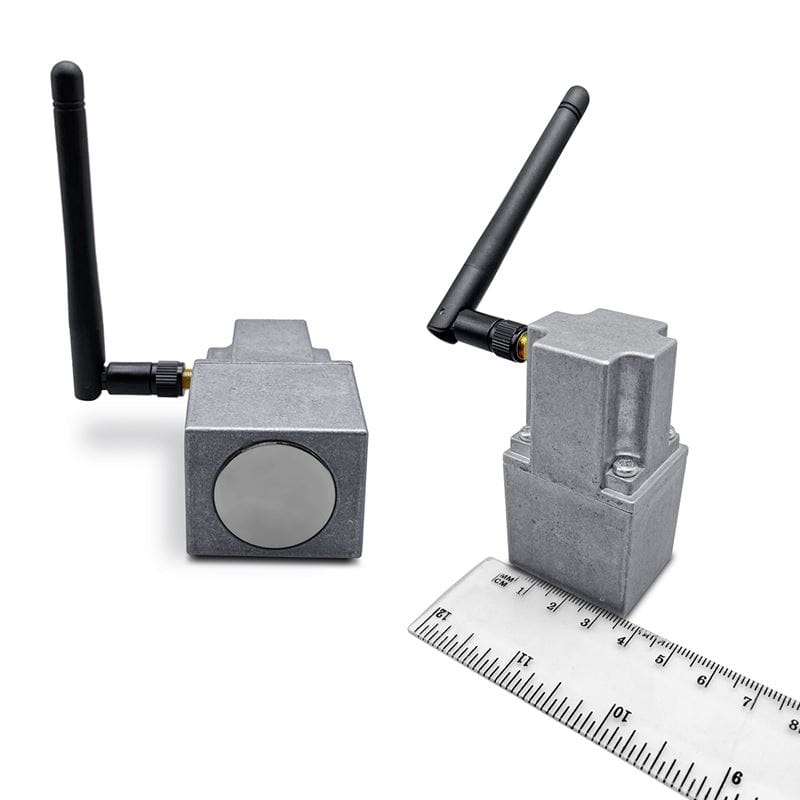Wireless sensor reports industrial asset health to technicians
Bluetooth LE-powered vibration and temperature sensor allows staff to remotely access reliable asset health data and receive alerts for predictive maintenance purposes
Access to industrial equipment health data and predictive maintenance applications for these assets is vital to a factory or commercial building environment. Without quality predictive maintenance practices in place, inefficiencies set in and the risk of costly machine downtime increases.
Information is the key to implementing quality predictive maintenance practices and reducing machine downtime, according to Paymon Rasekhy, CEO of Lynxemi, a Singapore-based Industrial Internet of Things (IIoT) solutions company.
“It's imperative there’s a history of information allowing trend analysis and detection of operational changes,” says Rasekhy. “In any dynamic machine such an electric motor, the control of the vibration and temperature performance of the machine is crucial to its health, operational cost, maintenance cost and productivity.”
To meet these challenges, Lynxemi developed its compact (30 by 36 by 68mm) form-factor Vibration and Temperature Sensor employing a Nordic nRF52840 SoC, MEMS accelerometer and temperature sensor. To support the optimal balance between efficacy and maintainability, the Bluetooth 5.2/Bluetooth LE wireless sensor is programmed to capture critical asset health data and send reports on the equipment’s temperature and vibration performance at frequent regular intervals, along with any anomalous measurement notifications, to the technicians and supervisors responsible.
“Our Vibration and Temperature Sensor alerts the customer the instant one of these two key parameters is outside of an acceptable range and/or when there's a gradual drift of both parameters from the norm,” explains Rasekhy. “In addition to on-the-spot empirical analysis the reports are analyzed by AI algorithms so that the types of operational changes can be mapped to the type of failures. The backend processor utilizes machine learning to help vibration analysts quickly identify issues that might require immediate attention and predict potential malfunctioning or failures in advance.”

Lynxemi’s Vibration and Temperature Sensor employs Nordic’s nRF52840 SoC, a MEMS accelerometer and a temperature sensor to capture critical asset health data
Complete data sample processing
“Vibration sensors require a rather large data size to be transmitted each time and also need to be very low power,” says Rasekhy. “Bluetooth LE connectivity was the most obvious choice for our solution compared to alternative wireless protocols that can be power hungry, costly, less sophisticated or don’t provide sufficient throughput.”
Thanks to the Nordic SoC’s Arm Cortex M4 processor, which supports the application’s complex Floating Point and Digital Signal Processing computations, as well as the chip’s generous memory allocation (1MB Flash memory and 256kB RAM) and full Bluetooth 5.2 support including 2x on-air raw data bandwidth (2Mbps), the SoC is able to comfortably process the large volume of data generated from the device’s accelerometer and temperature sensor.
The Nordic SoC then relays the complete asset health data samples and system alerts to a gateway using MQ Telemetry Transport (MQTT)—a simple and lightweight network protocol, designed for constrained devices—running over Bluetooth LE. The gateway performs some additional processing, before the data is finally sent to the Cloud for even deeper analysis. The periodic measurements are logged and stored on Lynxemi’s secure servers and are viewable by authorized users, while the anomalous data is logged on the server and alerts are triggered through email, Telegram or a similar messaging app to the responsible party for immediate maintenance action.
“It’s the capacity of the Bluetooth LE protocol that allows us to send a complete data sample which is then analyzed by the gateway and the Cloud,” says Rasekhy.
In addition, the nRF52840 SoC’s +8dBm TX and support for Bluetooth Long Range enables the Vibration and Temperature Sensor to wirelessly transmit up to 100 meters range even in RF-challenging industrial environments. The sensor uses a non-rechargeable Lithium Thionyl 3400mAh battery that can operate for around 25,000 measurements before replacement.
“The Nordic nRF52840 SoC’s generous memory allocation and low power allow us to store relevant information at the edge while keeping battery consumption to a minimum. As an example, we store a complete vibration sample in memory for each axis before reporting,” says Rasekhy.
More broadly, Lynxemi sees a promising future for the Industrial IoT and wireless connectivity as a tool to improve predictive maintenance practices, and subsequently reduce downtime in industrial applications.
“Our general focus is on factory and commercial building applications, and as such we have developed a suite of Bluetooth LE sensors including CO2, PM2.5, temperature, humidity, distance measurement, vibration, people counter, proximity and light,” he says.
“Our goal is to continue developing solutions that help customers reduce operating costs by enabling ‘just in time’ maintenance and improve the atmosphere of building/factory environments for optimal human experience.”